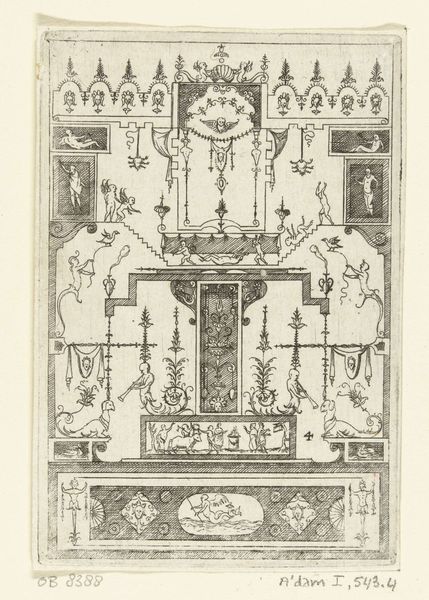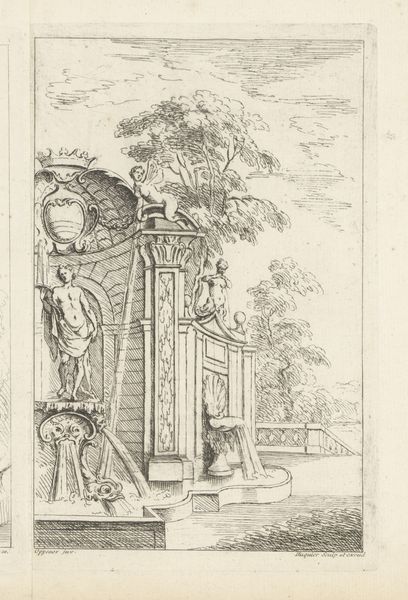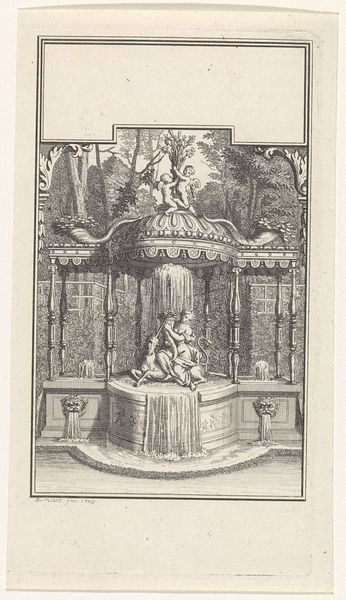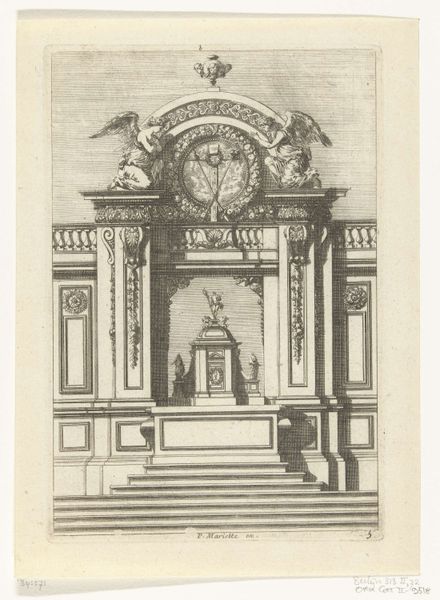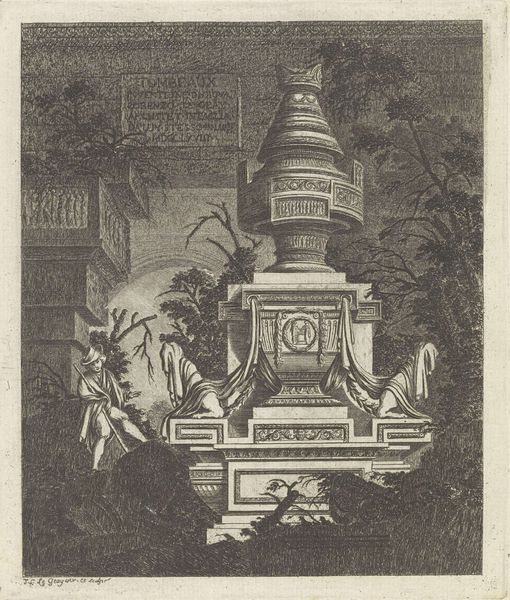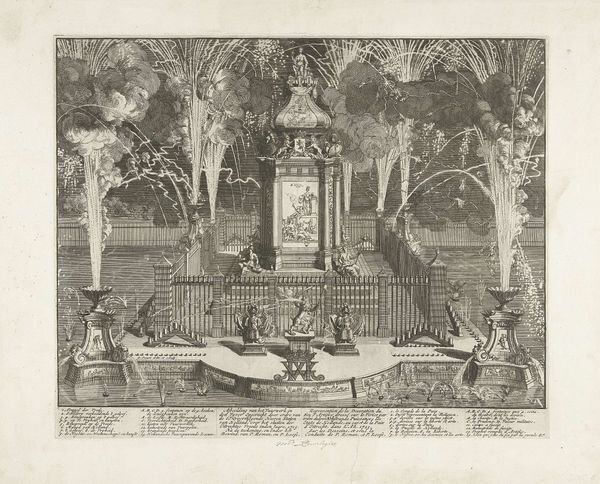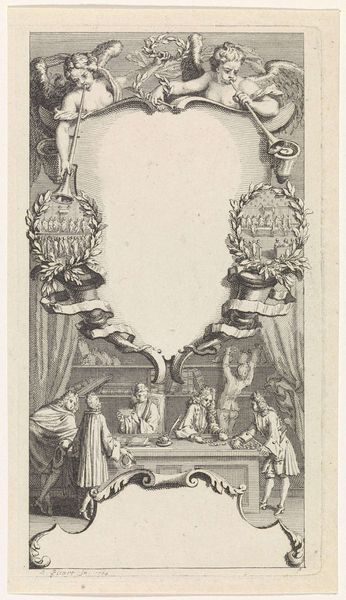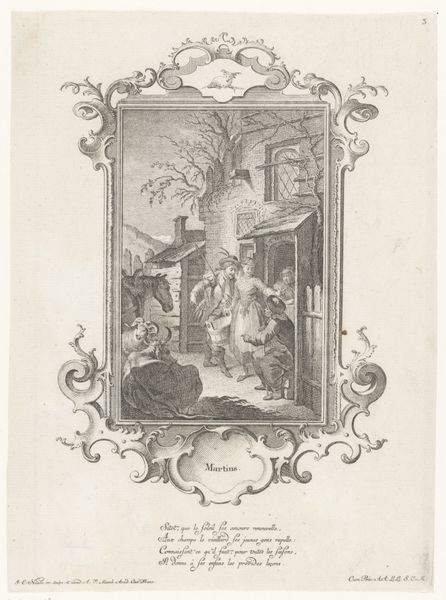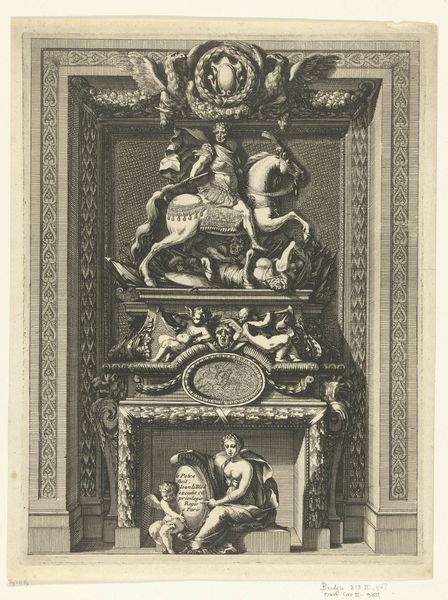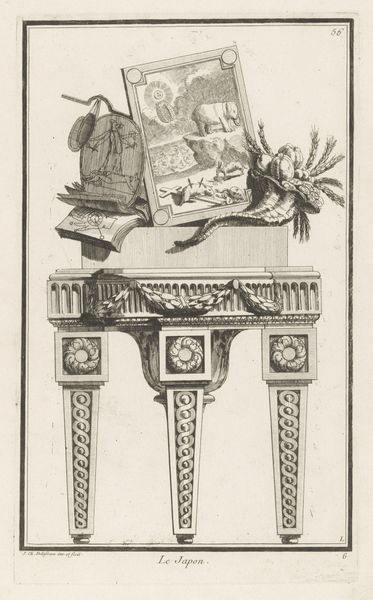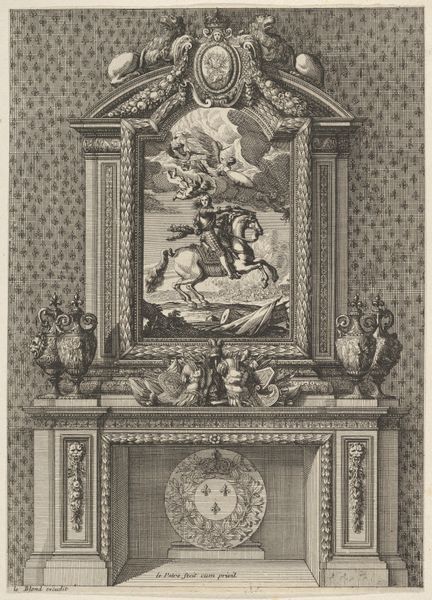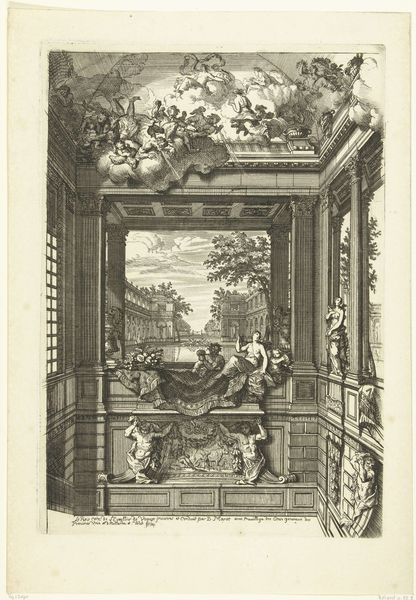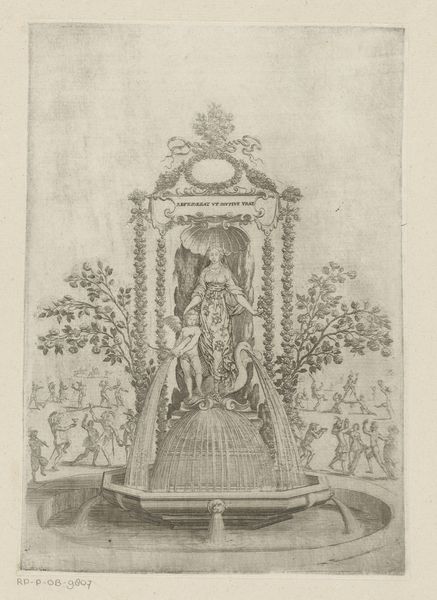
drawing, print, engraving
#
drawing
#
neoclassicism
# print
#
book
#
old engraving style
#
traditional media
#
sketchwork
#
sketchbook drawing
#
history-painting
#
engraving
Dimensions: height 144 mm, width 95 mm
Copyright: Rijks Museum: Open Domain
Curator: Looking at this print, what stands out to you immediately? Editor: A sort of studious serenity, actually. The precision of the lines gives it a calming, almost ethereal quality. Curator: That's interesting. The piece, entitled “Vignet met boeken,” created by Johannes Swertner between 1760 and 1813, definitely captures a moment of idealized intellectual pursuit. I wonder what role these images played in its reception. Editor: I imagine these would be highly charged with meaning, and potentially be interpreted very differently according to who saw it and when. For example, are the books simply symbols of wisdom, or markers of status in a rapidly changing society? How did literacy and access to books influence the social and political landscapes? Curator: I see your point. The arrangement itself is telling; books displayed almost as trophies. What does this visual arrangement of objects—sculptures, books, and framed artworks— evoke for you, iconographically speaking? Editor: The classical statuary staged with the books strongly signals Neoclassicism—the pursuit of reason, order, and idealized forms based on the Antique. Note the strategic placement of figures atop a temple-like structure and their implied power of knowledge. Curator: Exactly! It creates a cultural lineage. This composition transmits power through art and knowledge. Think about the implications within social circles; such imagery visually reinforced who belonged and who was excluded from intellectual discourse during that period. Editor: That makes me wonder: how accessible would an image like this have been? Was it circulated widely, or limited to a specific educated class? And in that context, did it operate as a genuine encouragement of learning, or as a reinforcement of existing hierarchies? Curator: Perhaps both, which only complicates and enriches our interpretation. It served the public role of disseminating culture while simultaneously guarding access to it, it could speak to different sections of society at different times. It reveals both intellectual progress and continued social stratification through a specific visual vernacular. Editor: Absolutely. It is a beautiful reminder of how intertwined cultural aspiration, visual codes, and political power are. Curator: I agree. Reflecting on this “Vignet met boeken,” one recognizes art not merely as aesthetic presentation, but as active agent within societal constructs.
Comments
No comments
Be the first to comment and join the conversation on the ultimate creative platform.
